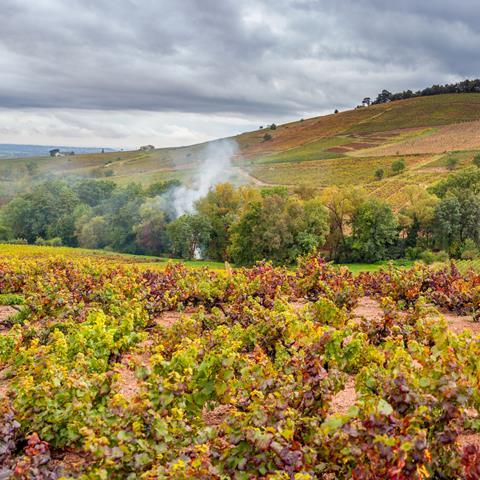A team at Oregon State University has developed cellulose nanofibre-based coatings that target three volatile phenols known to contribute to smoke taint in grapes. They are now working to produce a spray that vineyard managers can apply to their grapes to protect them from wildfire smoke, and expect to have that product ready in several years.
The work was sparked by a series of major wildfires in 2020 during grape harvest season across Oregon, Washington and California. Questions about how the smoke compounds that settled on the grapes might affect wines prompted many vineyard managers to write off the entire year’s harvest in those regions. This led to estimated losses of $3.7 billion (£2.9 billion) for the wine industry.
The nanofibre coatings the team created blocked deposition of guaicol and syringol and captured meta-cresol, wildfire smoke compounds that can taint wine made using these grapes. In the case of the first two compounds, they aren’t absorbed by the coating and don’t need to be washed off prior to winemaking, while the coating does absorb the third compound and so requires removal before the grapes can be turned into wine.
The coatings are produced by blending cellulose nanofibres and chitosan with several other ingredients. Previous studies showed that cellulose nanofibres’ porous structure can absorb and diffuse compounds of various sizes.
To test the coatings, the researchers applied them on vines at the university’s Woodhall Vineyard and installed smoke chambers to check how effective they were in blocking smoke. After working on their coating for two years, the team determined that they don’t affect grape growth and quality. The team is now refining its coatings and performing cost analysis studies.
‘Wildfire smoke is an increasing problem for wineries in the United States and around the world and right now vineyard managers really have no tools to manage the effects of the smoke,’ said Elizabeth Tomasino, an associate enology professor at OSU. ‘This coating has the potential to transform the wine industry.’
References
T Tran et al, J. Agric. Food Chem., 2023, DOI: 10.1021/acs.jafc.3c05621


















No comments yet